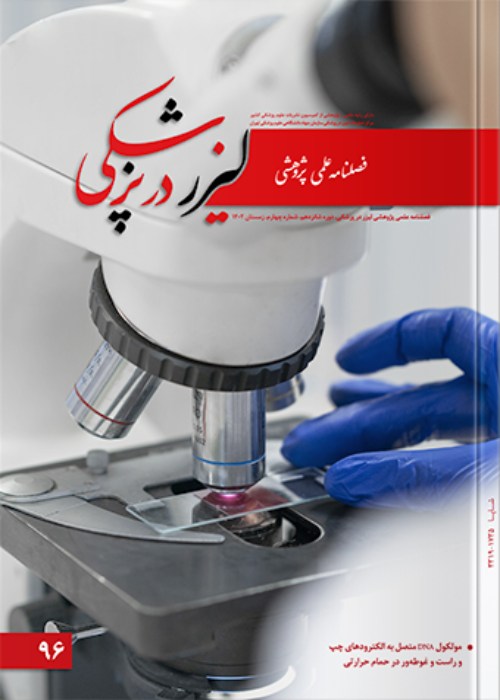Effect of Low-level laser therapy and autogenous bone graft on bone regeneration in the treatment of two wall and three wall intrabony periodontal defects: a clinical study
Author(s):
Abstract:
Background
Intrabony lesions caused by periodontal disease are of particular importance in terms of treatment. Such lesions have been treated with different methods including the use of autogenous bone harvested or allogeneic grafts, guided tissue regeneration (GTR) and enamel matrix proteins use (EMP) or a combination of these methods. Recently, the use of low power laser or Low-level lasertherapy (LLLT) as one of the new methods to improve bone repair has been of great interest.The purpose of this study was to compare the use of autogenous bone alone and in combination with Low-level laser therapy (LLLT) in the treatment of two and three wall periodontal intrabony defects in vivo.Material And Methods
A number of 14 patients with moderate to severe chronic periodontitis were with bilateral intrabony defect(probing pocket depth of at least 5 mm and intrabony component of at least 3 mm) were included. In a split mouth study, 14 defects were treated in one side by OFD and autogenous bone while in the contralateral side Low-level laser therapy was done as an adjunct treatment to the OFD and autogenous bone grafting. A GaAlAs diode laser (830 nm) (continuous wave 40 Mw and fluence 4 J/cm2 with total energy density of 16 J/cm2) was used. Laser therapy was repeated at days 3, 5 and 7 with the same parameters. Re-entry surgeries were done after 3 months. Clinical probing pocket depth, clinical attachment level, gingival margin level,alveolar crest level and the deepest part of the defect all were recorded relative to an acrylic stent at baseline and after 3 months. intrabony defect depth was also recorded at baseline and after 3 months.Results
Application of a low level laser with the parameters listed reduced probing depth (3.78 ± 0.72 mm vs. 2.39 ± 1.02 mm), improved the clinical attachment level (3.42 ± 0.93 mm vs. 2.25 ± 1.12 mm), reduced the distance between deepest part of the defect to stent (3.21 ± 1.03 mm vs. 1.44 ± 0.20 mm) and also reduced defect depth (1.33 ± 0.18mm versus 2.50 ± 0.91 mm) significantly when compared to control group, while it had no significant effect on gingival margin level and alveolar crest level.Conclusion
The results of this study suggest the use of low level laser therapy in combination with autogenous bone can improve the periodontal treatment outcome in terms of probing depth reduction, clinical attachment level improvement and reduction of the defect depth.Language:
Persian
Published:
Lasers in Medicine, Volume:8 Issue: 4, 2012
Pages:
6 to 14
magiran.com/p1038430
دانلود و مطالعه متن این مقاله با یکی از روشهای زیر امکان پذیر است:
اشتراک شخصی
با عضویت و پرداخت آنلاین حق اشتراک یکساله به مبلغ 1,390,000ريال میتوانید 70 عنوان مطلب دانلود کنید!
اشتراک سازمانی
به کتابخانه دانشگاه یا محل کار خود پیشنهاد کنید تا اشتراک سازمانی این پایگاه را برای دسترسی نامحدود همه کاربران به متن مطالب تهیه نمایند!
توجه!
- حق عضویت دریافتی صرف حمایت از نشریات عضو و نگهداری، تکمیل و توسعه مگیران میشود.
- پرداخت حق اشتراک و دانلود مقالات اجازه بازنشر آن در سایر رسانههای چاپی و دیجیتال را به کاربر نمیدهد.
In order to view content subscription is required
Personal subscription
Subscribe magiran.com for 70 € euros via PayPal and download 70 articles during a year.
Organization subscription
Please contact us to subscribe your university or library for unlimited access!


